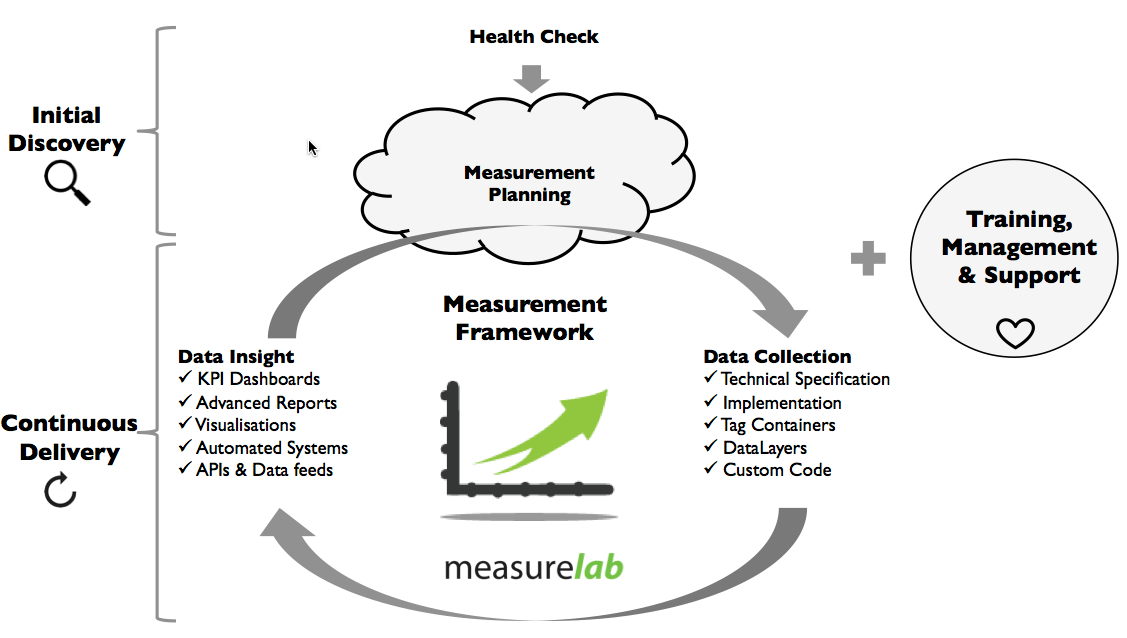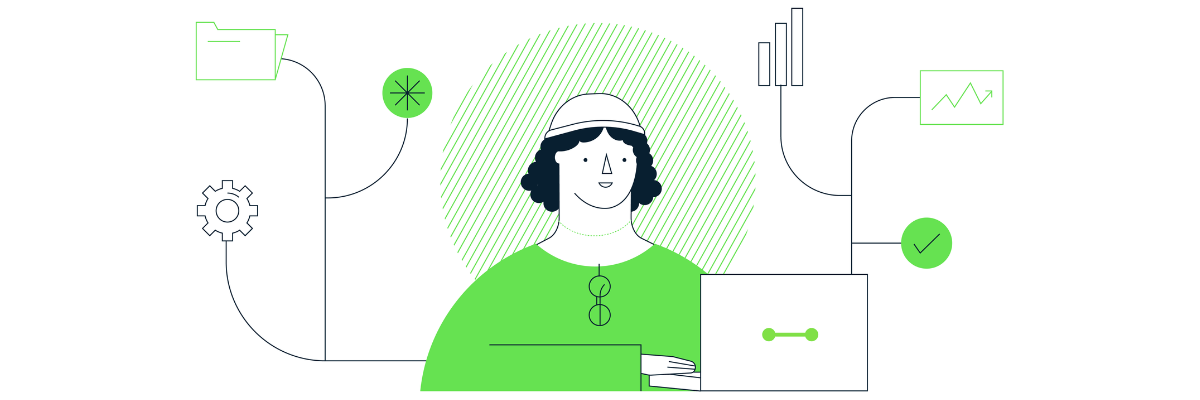Google Analytics Health Check (Part 1): My second week at Measurelab

Right, now that some of the basic concepts and industry jargon are starting to sound a bit more familiar, things are starting to get interesting – not that last week was boring but this week I’ve been having a go at one of the most important parts of a piece of “initial discovery” for a client: A Google Analytics Health Check.

[Health Check: as part of the Initial Discovery stage]
In this document, which the team creates for every single one of our clients, we run a detailed audit of the client’s data collection and report configurations – and make all the necessary recommendations to ensure that:
- The account collects the right information to better understand visitor behaviour
- We and/or the client can create actionable reports for key stakeholders
- Any inaccurate data is properly filtered out to avoid contamination
All the above might sound pretty obvious but there are so many little details (e.g. snippets of JavaScript code, settings here and there) that one needs to get right for the whole thing to work.
So, to cut the chase, what do we normally include in a Health Check?!
(drumroll please)
The contents of each Health Check will normally depend on a client’s measurement requirements and specific business needs…BUT these are the bits that are normally covered:
1- Overall implementation
Here, we try to answer questions regarding the general implementation of the account. For example:
- Is the GA code properly implemented and present in all pages?
- Is the code duplicated or contains any errors?
- If needed, is cross domain linking and tracking implemented and functioning properly?
- Are there any tag containers being used and if so, are they properly implemented?
- Are Event and Campaign tracking in place and pulling data?
The aim in this section is to clarify whether the data is being collected accurately and appropriately so it can be processed and analysed properly later on. I can’t tell you how many times this week I’ve been asking the team about JavaScript codes, cookies – the internet ones – and so on..
2- Web Properties
Here, we list the Web Properties that have been created or we have been granted access to and review some of the most important aspects each Web Property – for example:
- Any data limits being breached?
- Is the industry category properly set? – This bit is really important for the benchmarking reports
- Is Enhance Link Attribution enabled? – Key aspect for improved click-through data in the in-page reports
- Are the Social Plugins implemented and tracking properly?
So, basically, it’s about fine-tuning the data gathering! The more data we have, the better, as we can always worry about filtering during the next steps.
3- Reporting Views and Filters
Great, so the data is coming in nicely, now we just need to tidy it up, make sure that we are only getting what we need.
- Is the Reporting View configured and collecting data?
- Is the website address and time zone set correctly?
- URL Query Parameters excluded (if required)
- E-commerce tracking enabled? – Or Enhanced E-commerce if the client is already on Universal Analytics
- Are Google Webmaster Tools and Google Adwords accounts linked?
- Are View filters set up as required?
By now we should have a clear idea of the state of the account and whether there are any issues that need to be addressed urgently. Ensuring that the data is being gathered appropriately is probably the top priority during the first steps of the health check, as this will guarantee that once the Measurement Plan starts to take shape, we have as much information as possible to meet our needs.
And that’s it for now folks! Next week I’ll wrap it up by covering the final steps of the Health Check. In the meantime, if you have any questions, comments – or advice – please do not hesitate to get in touch or leave a comment below. 🙂

Subscribe to our newsletter:
Further reading

How to extract GA4’s event sequencing in BigQuery using the new batch fields

What is offline event data import in GA4?
